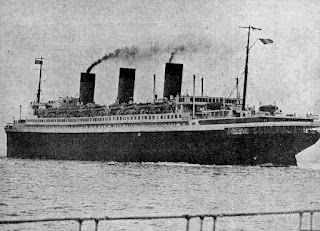
Between the Naval Memorial and the Hoe Lodge Gardens, there is a cross with the number '3' embedded in the pavement. This marks the spot where three Royal Marines were executed by firing squad on 6 July, 1797. Their names were Lee, Coffy and Branning and they were found guilty of attempting to excite a mutiny at Stonehouse Barracks. Another Marine, M Gennis was convicted of a similar crime and sentenced to 1000 lashes and transported to Botany Bay for life.
The incident was reported in the Sherborne and Yeovil Mercury on Monday 10th July,1797. It read:
'PLYMOUTH, July 8 - On Wednesday morning an express arrived here from the War-Office, with a warrant for the execution of Lee, Coffy, and Branning, three marines who were last week tried by a General Court-Martial, and found guilty of an attempt to excite a mutiny among the marine corps at Stone-house Barracks and on Thursday at 12 o'clock the troops at this place and in the neighbourhood, consisting of the Sussex fencible cavalry, four companies of the royal artillery, the Lancashire, East Devon and Essex regiments of militia, the 25th regiment of foot, royal independent invalids, and Plymouth volunteers, assembled on the Hoe, and formed in a half circle in order to witness the execution. M Gennis, another marine tried for a similar crime, and sentenced to receive 1000 lashes, and to be afterwards transported to Botany Bay for life, was brought on the ground soon after twelve o'clock, and received 500 lashes, and then conveyed back to Stone-house Barracks. At half past one o'clock, Lee, Coffy and Branning were marched from the Citadel under the escort of a party of marines, with a coffin before each, preceded by the band of that corps playing the Dead March in Saul.
The former was attended by the Rev. Dr. Hawker; and the two latter by a Roman Catholic priest, who after praying with them near an hour, quitted them, and they all three knelt on their coffins for a few minutes, when an officer of marines came and drew the caps over their faces, and a party of twenty marines immediately came down and put a period to their existence by discharging the contents of their muskets through their bodies, after which all the regiments marched round them in solemn procession, the whole forming, perhaps, one of the most awful scenes that the human eye ever witnessed. They all behaved in a manner becoming their melancholy situation, and apparently very resigned and penitent. About thirty thousand people were supposed to be present at the execution'.
There was more to the execution than mentioned in the newspaper though. Ten thousand men of the Fleet and garrison were there to watch them die and most of Plymouth appeared to have turned out too. When the three men faced the firing squad and the shots were fired, Coffy and Branning fell forward, dead, into their coffins. However, Lee was not hit and had to go through the whole procedure again. The reserve firing squad lined up, took aim and fired but again Lee was untouched. Once more, they loaded up, took aim but again missed Lee. In the end, a sergeant came up behind him and shot him dead at close range. It seems odd that the firing squad missed Lee three times and perhaps there was some sympathy with him amongst the troops.
Earlier fourteen seamen had been hanged at the yardarm on their ships in the Sound.
This was to be Plymouth's last public execution.
























